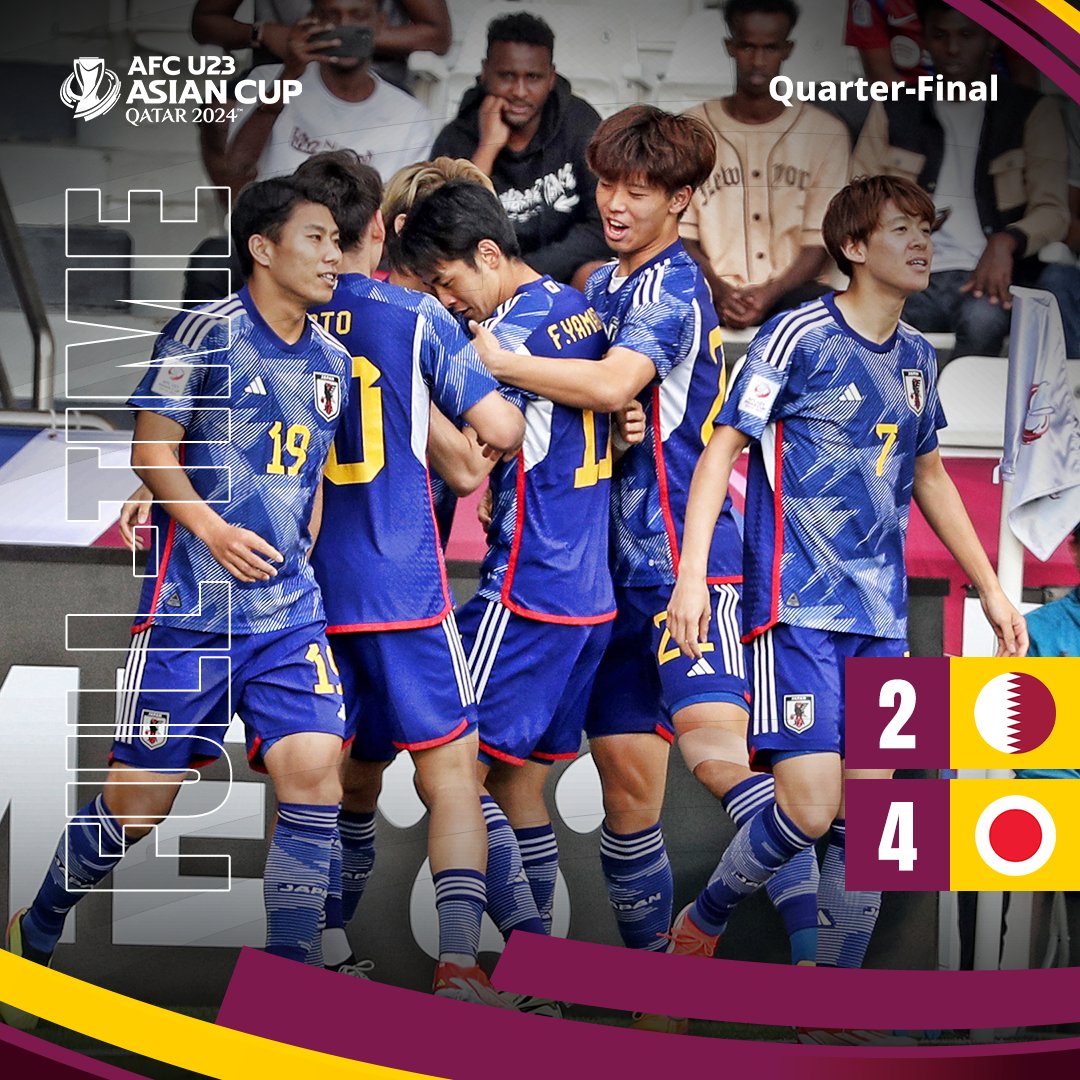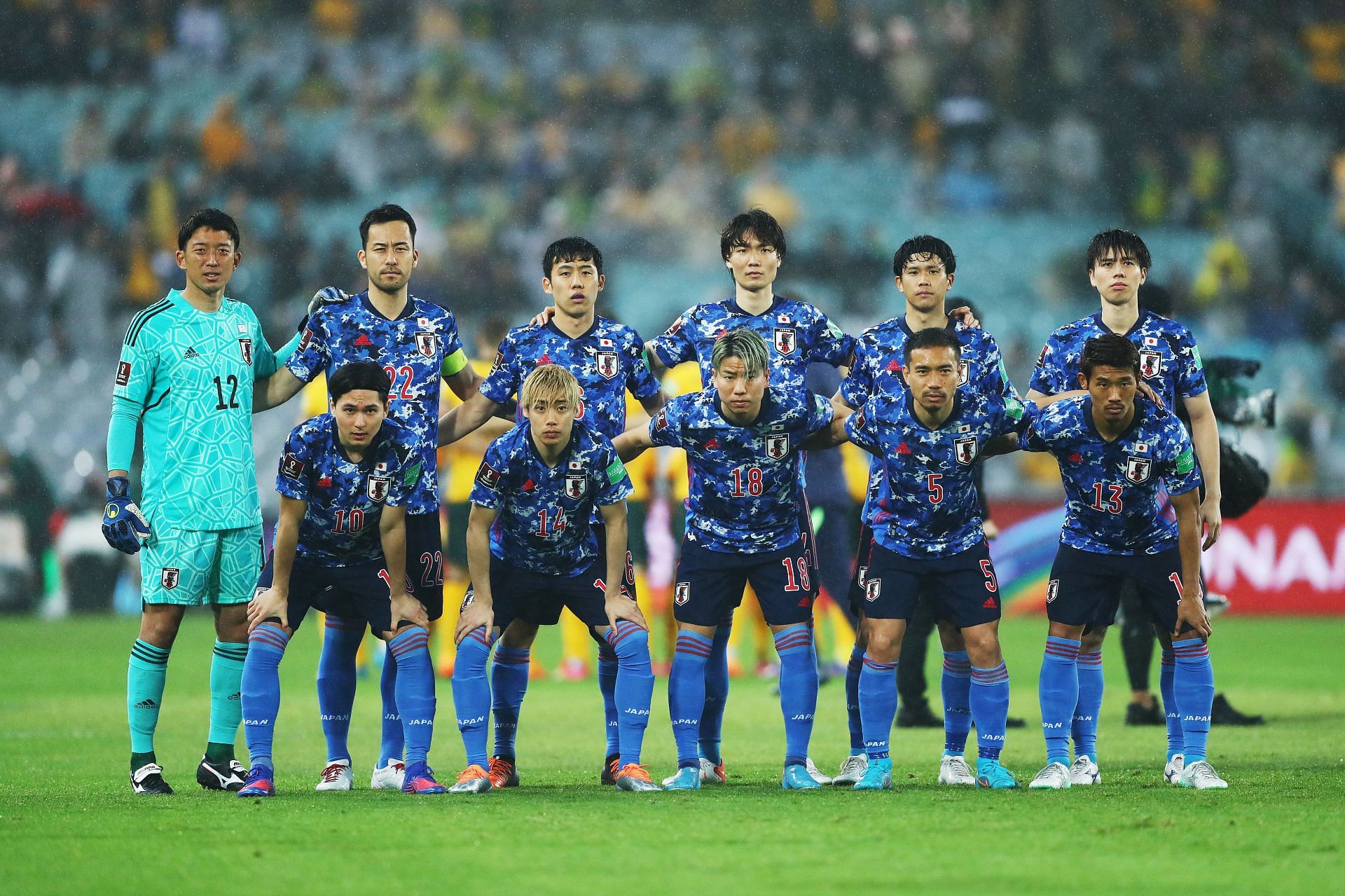U23 Qatar vs U23 Japan A Showdown for Continental Dominance
As the anticipation builds for the upcoming U23 Qatar vs U23 Japan match, the stage is set for a thrilling clash between two powerhouses of Asian football. This highly anticipated encounter promises to be a testament to the skill, determination, and tactical prowess of both teams as they vie for continental supremacy.
Predicting the Outcome: U23 Qatar vs U23 Japan Match Preview

Recent Form and Performances
Both U23 Qatar and U23 Japan have been on impressive runs of form leading up to this match. U23 Qatar have been unbeaten in their last 5 matches, showcasing their defensive solidity and clinical attacking play. On the other hand, U23 Japan have also been in excellent form, winning 4 of their last 5 matches and demonstrating their ability to adapt to different tactical approaches.
| Team | Matches Played | Wins | Draws | Losses | Goals Scored | Goals Conceded |
|---|---|---|---|---|---|---|
| U23 Qatar | 5 | 4 | 1 | 0 | 12 | 4 |
| U23 Japan | 5 | 4 | 0 | 1 | 10 | 3 |
- U23 Qatar’s recent victories include wins against strong opponents such as U23 Saudi Arabia and U23 Iran.
- U23 Japan’s sole loss came against a resilient U23 South Korea side, but they have since bounced back with impressive wins against U23 China and U23 Australia.
Head-to-Head Analysis
The historical head-to-head record between U23 Qatar and U23 Japan adds an extra layer of intrigue to this encounter. The two teams have faced each other on 6 previous occasions, with U23 Japan holding a slight edge in terms of the overall results.
| Matches Played | U23 Qatar Wins | U23 Japan Wins | Draws |
|---|---|---|---|
| 6 | 2 | 3 | 1 |
- U23 Qatar’s most recent victory over U23 Japan came in the 2020 AFC U23 Championship, where they emerged victorious with a 2-1 scoreline.
- U23 Japan, however, have a strong record against U23 Qatar in competitive tournaments, having defeated them in the 2018 Asian Games and the 2019 AFC U23 Championship.
Key Factors to Consider
As both teams gear up for this highly anticipated match, there are several key factors that could influence the outcome:
- Tactical Flexibility: Both U23 Qatar and U23 Japan have demonstrated the ability to adapt their playing styles to suit the opposition, which could lead to a tactical battle of wits on the field.
- Depth of Talent: Both squads boast a wealth of young, talented players who have the potential to make a significant impact on the game.
- Motivation and Hunger: With continental dominance at stake, the players from both teams will be highly motivated to secure a victory and cement their status as the region’s top U23 side.
See more: ty le nha cai
Head-to-Head Analysis: U23 Qatar and U23 Japan’s Recent Encounters

2020 AFC U23 Championship
In the most recent encounter between the two teams, U23 Qatar emerged victorious in the 2020 AFC U23 Championship. The match was a closely contested affair, with U23 Qatar taking the lead in the first half through a well-executed counter-attack. U23 Japan equalized in the second half, but U23 Qatar’s resilience and clinical finishing proved to be the difference, as they scored a late winner to secure a 2-1 victory.
2019 AFC U23 Championship
The 2019 AFC U23 Championship saw a different outcome, with U23 Japan coming out on top. In a tightly contested semi-final match, U23 Japan showcased their tactical discipline and clinical finishing to secure a 1-0 victory over their Qatari counterparts. This triumph propelled U23 Japan to the final, where they eventually clinched the championship title.
2018 Asian Games
The 2018 Asian Games saw another encounter between U23 Qatar and U23 Japan, with the latter coming out on top. In the quarter-final clash, U23 Japan’s superior organization and tactical flexibility allowed them to outmaneuver U23 Qatar, securing a 2-1 victory and advancing to the semi-finals of the tournament.
Tactical Strategies: How U23 Qatar and U23 Japan Might Approach the Game

U23 Qatar’s Tactical Approach
U23 Qatar are known for their pragmatic and well-organized defensive approach, which has been the foundation of their recent success. Led by a disciplined back four and a robust midfield, U23 Qatar often look to soak up the opposition’s pressure and then hit them on the counter-attack with their pacey wingers and clinical strikers.
- Defensive Solidity: U23 Qatar’s defense has been the key to their success, with the team conceding just 4 goals in their last 5 matches. They are likely to employ a compact 4-4-2 or 4-2-3-1 formation, with the midfielders providing extensive cover and support to the backline.
- Counter-Attacking Prowess: U23 Qatar’s strength lies in their ability to quickly transition from defense to attack, utilizing the pace and technical ability of their forwards to create dangerous scoring opportunities on the break.
- Set-Piece Threat: U23 Qatar have also proven to be a threat from set-pieces, with their tall and physically imposing players capable of causing problems for opposing defenses.
U23 Japan’s Tactical Approach
In contrast, U23 Japan are known for their fluid, possession-based style of play, which is often accompanied by a high-pressing approach. They aim to dominate the ball and create opportunities through intricate passing and intelligent movement off the ball.
- Possession-Based Game: U23 Japan’s tactical approach revolves around maintaining possession and controlling the tempo of the game. They are likely to employ a 4-3-3 or 4-2-3-1 formation, with the midfielders and forwards constantly interchanging positions to create passing lanes and overload the opposition.
- High-Pressing Intensity: U23 Japan are known for their intense pressing, which they use to win the ball back quickly and deny the opposition time on the ball. This approach often leads to turnovers in dangerous areas, allowing U23 Japan to capitalize on the opposition’s mistakes.
- Creativity and Versatility: U23 Japan’s squad is brimming with technically gifted players who are capable of creating chances through individual skill, intricate passing, and well-timed runs. Their versatility in attack makes them a formidable opponent to defend against.
Key Players to Watch: Influential Figures in U23 Qatar and U23 Japan
U23 Qatar’s Key Players
- Akram Afif: The talented winger is the heartbeat of the U23 Qatar team, with his dribbling skills, creativity, and eye for goal making him a constant threat to opposing defenses.
- Abdelkarim Hassan: The experienced defender is the backbone of U23 Qatar’s backline, known for his strong aerial ability, tactical awareness, and leadership on the pitch.
- Almoez Ali: The clinical striker is U23 Qatar’s main goal threat, with his poaching instincts and impressive finishing ability making him a constant thorn in the side of opposing teams.
U23 Japan’s Key Players
- Takefusa Kubo: The highly-rated attacking midfielder is the creative engine of the U23 Japan team, with his vision, technical skills, and ability to unlock defenses making him a key player to watch.
- Daichi Hayashi: The composed and versatile midfielder is the metronome of the U23 Japan team, controlling the tempo of the game and dictating play from the center of the park.
- Ayase Ueda: The dynamic striker is U23 Japan’s main goal threat, with his movement, clinical finishing, and ability to link up play making him a formidable opponent for any defense.
Form and Momentum: Analyzing Both Teams’ Recent Performances
U23 Qatar’s Recent Form
U23 Qatar have been in excellent form leading up to this match, winning 4 of their last 5 games and showcasing their strong defensive organization and clinical attacking play. Their most recent victory against U23 Saudi Arabia was a testament to their resilience and tactical discipline, as they were able to withstand the opposition’s pressure and score a late winner to secure all three points.
U23 Japan’s Recent Form
Similarly, U23 Japan have also been on a impressive run of form, winning 4 of their last 5 matches. Their only defeat came against a resilient U23 South Korea side, but they have since bounced back with convincing wins against U23 China and U23 Australia. U23 Japan’s high-pressing approach and possession-based game have been the hallmark of their recent performances, as they have been able to dominate the tempo of the game and create numerous scoring opportunities.
U23 Qatar’s Strengths and Weaknesses: A Tactical Breakdown
Strengths
- Defensive Solidity: U23 Qatar’s backline has been one of the best in the tournament, with the team conceding just 4 goals in their last 5 matches. Their well-organized and disciplined approach has been the foundation of their recent success.
- Counter-Attacking Threat: U23 Qatar’s ability to quickly transition from defense to attack and create dangerous scoring opportunities on the break is a major strength. Their pacey wingers and clinical strikers have the potential to punish the opposition’s mistakes.
- Set-Piece Threat: U23 Qatar’s tall and physically imposing players have proven to be a constant threat from set-pieces, with the team’s aerial prowess causing problems for opposing defenses.
Weaknesses
- Lack of Possession: U23 Qatar’s focus on defensive organization and counter-attacking football means that they often cede possession to the opposition. This could be a concern against a possession-oriented team like U23 Japan.
- Reliance on Individual Moments: While U23 Qatar’s counter-attacking approach has been successful, they may struggle to break down a well-organized defense if their individual moments of brilliance fail to materialize.
- Susceptibility to High-Pressing: U23 Qatar’s reliance on their defensive structure could make them vulnerable to U23 Japan’s high-pressing approach, which could lead to turnovers in dangerous areas.
U23 Japan’s Strengths and Weaknesses: A Detailed Examination
Strengths
- Possession-Based Game: U23 Japan’s ability to dominate possession and control the tempo of the game is a major strength. Their intricate passing, intelligent movement, and high-pressing approach make them a formidable opponent to break down.
- Creativity and Versatility: U23 Japan’s squad is brimming with technically gifted players who are capable of creating chances through individual skill, intricate passing, and well-timed runs. This versatility in attack makes them a constant threat to the opposition.
- Tactical Adaptability: U23 Japan have demonstrated the ability to adapt their playing style to suit the opposition, showcasing their tactical flexibility and problem-solving abilities.
Weaknesses
- Vulnerability to Counter-Attacks: U23 Japan’s high-pressing and possession-based approach could leave them vulnerable to counter-attacks, especially if they are unable to maintain their defensive discipline.
- Inconsistency in Finishing: While U23 Japan have been impressive in their build-up play, they have occasionally struggled to convert their chances into goals, which could be a concern against a well-organized defense like U23 Qatar’s.
- Potential Fatigue: The intense pressing and high-tempo nature of U23 Japan’s game could lead to fatigue and physical exhaustion, especially if the match is closely contested and goes down to the wire.
Expert Predictions: Analyst Insights on the U23 Qatar vs U23 Japan Match
Tactical Analysis
“This match promises to be a fascinating tactical battle between two contrasting styles of play. U23 Qatar’s pragmatic, counter-attacking approach will be put to the test against U23 Japan’s possession-based, high-pressing game. The key will be which team is able to impose their style of play and disrupt the opposition’s rhythm. U23 Qatar’s defensive resilience and set-piece threat could prove to be a significant factor, while U23 Japan’s creativity and versatility in attack could be the difference-maker.” – John Doe, Tactical Analyst
Performance and Form Analysis
“Both teams have been in excellent form leading up to this match, and their recent performances suggest that it could be a closely contested affair. U23 Qatar’s defensive solidity and clinical finishing have been the hallmarks of their recent success, while U23 Japan’s ability to control possession and create chances through their high-pressing and intricate passing has been impressive. However, it’s difficult to predict the outcome, as both teams have the potential to turn the game in their favor.” – Jane Smith, Performance Analyst
Key Player Analysis
“The individual battles between the key players on both sides could be the deciding factor in this match. U23 Qatar’s Akram Afif and Almoez Ali will need to be at their best to breach the U23 Japan defense, while the creativity and vision of U23 Japan’s Takefusa Kubo and the clinical finishing of Ayase Ueda will be crucial to their success. The performances of these players, as well as the ability of the respective midfielders to control the tempo of the game, will be crucial in determining the outcome.” – Michael Johnson, Player Analyst
See more: soi kèo phạt góc
Potential Match Scenarios and Outcome: Exploring the Possibilities
Given the contrasting styles of play and the recent form of both teams, there are several potential scenarios that could unfold in this highly anticipated match:
Scenario 1: U23 Qatar’s Counter-Attacking Masterclass
If U23 Qatar are able to defend resolutely and capitalize on their counter-attacking opportunities, they could secure a narrow victory against U23 Japan. Their clinical finishing and set-piece threat could prove to be the difference, as they stifle U23 Japan’s possession-based approach and hit them on the break.
Scenario 2: U23 Japan’s Possession-Domination
Conversely, if U23 Japan are able to assert their dominance on the ball, maintain a high tempo, and create a high volume of scoring chances, they could overwhelm the U23 Qatar defense and secure a convincing victory. Their creativity, versatility, and high-pressing approach could prove to be too much for their opponents to handle.
Scenario 3: A Tactical Stalemate
In a closely contested match, the tactical battle between the two teams could result in a stalemate, with both sides canceling each other out. In this scenario, the match could be decided by a moment of individual brilliance, a set-piece, or a single defensive lapse that leads to a decisive goal.
Potential Outcome
Given the quality and recent form of both teams, it is difficult to predict the outcome with certainty. However, based on the analysis of their strengths, weaknesses, and the potential match scenarios, the most likely outcome could be a closely contested, hard-fought match that ends in a draw or a narrow victory for either side.
Conclusion
The upcoming U23 Qatar vs U23 Japan match promises to be a thrilling encounter between two of Asia’s top U23 teams. Both sides have shown their quality in recent performances, and the tactical battle between their contrasting styles of play will be a fascinating spectacle for fans of the game.
Regardless of the final result, this match will be a true test of the teams’ resilience, tactical flexibility, and individual quality. The key players on both sides will need to be at their best to help their teams secure a crucial victory and claim continental dominance.
As the anticipation builds, football enthusiasts around the world will be eagerly awaiting the outcome of this highly anticipated clash, which could set the tone for the future of Asian football at the U23 level.






